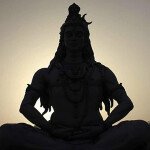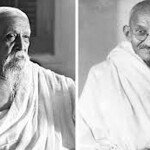In many respects, Yoga may appear to be identical with religion, and yet the distinction is very vast. If Yoga is a quest, religion, too, is a quest; if yoga aims at the practice of a discipline which aims at uniting the individual and his faculties with the operation of the universal and transcendental consciousness and being, religion, too, has a similar discipline. Where then is the difference? The answer lies in the fact that although religion at its core and at its highest aspiration aims at the spiritual experience, although great religions have their origin in discipline and experience, they tend to develop systems of dogma and to prescribe belief in the dogma. Whatever spiritual discipline is proposed, it becomes encrusted and overlaid with ceremonies, rituals, and institutional prescriptions regarding conduct, both individual and collective. In this situation, religion may be seen as the first approach to yoga, but even then it may not be an indispensable gate to yoga. Yoga proceeds directly by a change of consciousness, a change from the ordinary consciousness, ignorant of the true self, to a greater consciousness in which one finds one's true being and into a direct and living contact by experience and then a union with the Divine. For the yogic seeker, this change of consciousness is the one thing that matters and nothing else — belief, dogma, rituals, and ceremonies. Yoga not only aims at the total change of consciousness, but even its methods are derived from gradual increasing entry into a domain higher than the body, life, and mind. In other words, Yoga is an exploration of consciousness through consciousness.
Religion is seen to be a source of moral values, and the absoluteness of the moral values is sought to be derived from some religious sanction. Thus religions have attempted to erect systems and declared God’s commands through Avatar or the Prophet. Such systems have proved more dynamic and more powerful than the dry ethical idea. But quite often these systems conflict with what reason supports or else they are so ingrained in certain religious dogmas that they do not have an appeal to those who do not accept those dogmas. Besides, there is, too, a conflict among the dogmas. These systems are often framed that they prove unworkable and are, therefore, rejected by Nature. Or, sometimes, they are turned into a series of compromises and become obsolete in the march of Time. In the Yogic consciousness and in the knowledge and the effectivity that it produces the highest elements that morality in the deepest core seeks are fulfilled. But Yoga replaces the moral law by a progressive law of self-perfection, spontaneously expressing itself through individual nature. The spiritual law that yoga presents respects the individual nature, modifies and perfects it. And in this sense, it is flexible for each individual and can be known and made operative only by a gradual progression of consciousness and, more and more, by an entry into the real self. In its progressive movement, it may, if necessary, permit a short or a long period of governance by a moral law but always as a provisional device. It always looks forward to a time when one can arrive at a higher plane of consciousness in which the Right and the Good can find spontaneous expression. To the yogic consciousness, moral virtue is valuable as an expression of certain qualities which are for the time being necessary and useful for a given individual in an upward journey. Again, these qualities become modified and enriched as the higher consciousness develops higher levels of attitudes and stabilizes higher states of consciousness in which the divine qualities manifest more and more spontaneously.
Yoga is not confined merely to the aspect of conduct; the conduct dealt with by ethics is only a minor aspect of the totality of works, inner no less than the external. Yogic consciousness includes all these works and strives by the method of a progressive change in consciousness in the perfect expression of all aspects of works, and in these strivings it realizes also the unity of works with the highest knowledge and profoundest love.
It is true that religion too is an attempt to include all aspects of works and to arrive at some sort of unity of works with knowledge and love; but once again, its methods are largely mechanical and dogmatic, and it is only at the highest level of religion that the methods of spiritual disciplines that are prescribed are found suitable to some of the adherents, while to most adherents they remain more less mechanical. The progressive law of yogic development may approve, if necessary, a short or a long period of governance if the individual or of the race by a religion, but only as a provisional device; it always makes room for a passage beyond into the plane of a larger consciousness where distinctive religious methods melt into higher and spontaneous methods appropriate to larger consciousness. To the yogic consciousness religion is not valuable as a form, but only in so far as it may aid the ordinary consciousness of man to turn towards something that is deeper and higher and, even there, it stresses the necessity for every man to have his own distinctive spiritual discipline.
It may also be mentioned that yogic consciousness welcomes agnosticism, skepticism, atheism, positivism or free thinking and sees behind them a concern and a demand for authentic knowledge. It recognizes that if these are rightly understood, respected and fulfilled, they would become a powerful complement to what lies in consciousness behind the commonly accepted religious qualities of faith and unquestioning acceptance of dogmatic teachings and injunctions.
Yoga always looks behind the form to the essence and to the living consciousness; and in doing so, it brings to the surface that which lies behind in its ultimate truth. Yoga transcends the forms and the methods of morality and religion and creates and recreates its own living and progressive forms.
Yogic methods are distinctive and must not be confused with either morality or religion. A mere learning about Yoga is not Yoga, and even the most catholic book cannot be a substitute for the direct yogic practice of an inner change of consciousness by which one can perceive and realise the inner and higher self and transform the workings of the outer instruments of Nature. Nor can Yoga be practiced in a casual way or only as a part-time preoccupation. Yoga, to be properly practiced, must be taken as a sovereign and central occupation and must govern and permeate every aspect of life and every pursuit.
With gratitude to Sri KireetJoshi










